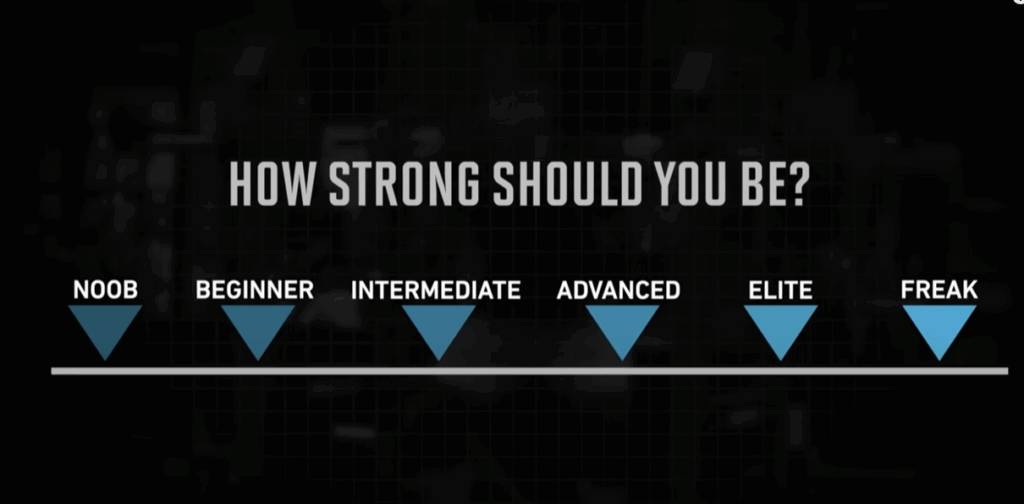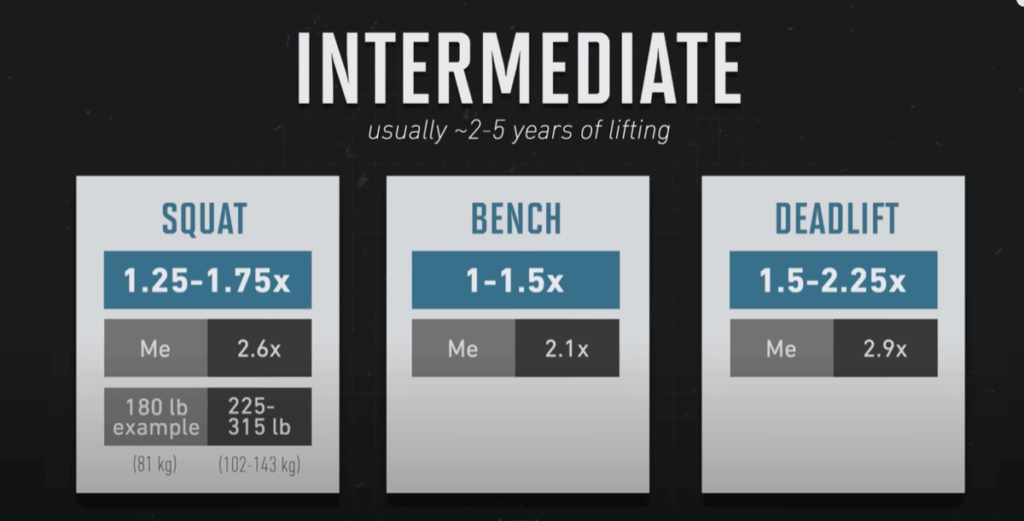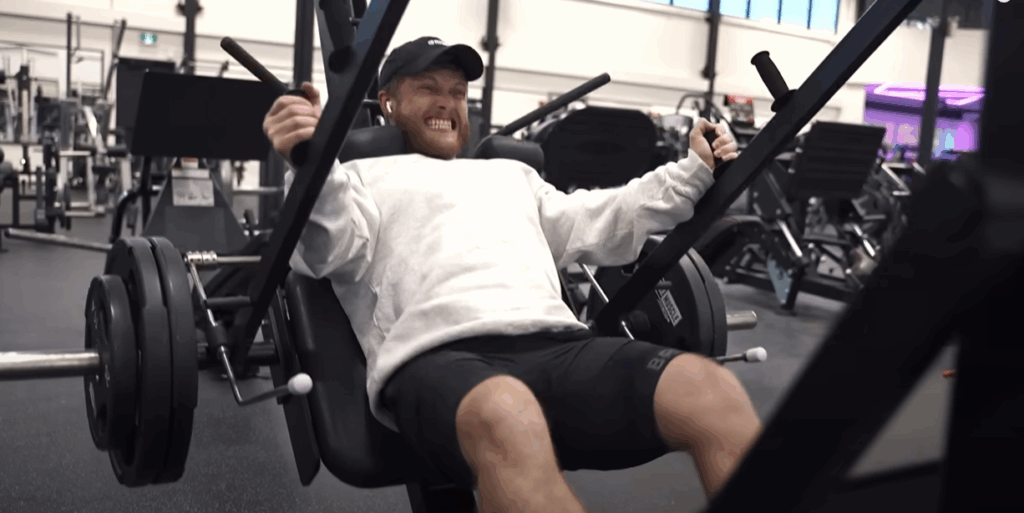Realistic Strength Standards for Every Training Level: From Beginner to Elite
If you’re new to the gym or have been lifting for years, knowing how your strength stacks up can help you set smart, achievable goals. Whether you’re chasing your first plate on the bar or aiming for a triple bodyweight deadlift, it helps to understand realistic expectations for each training stage — from novice to elite. This guide breaks down strength standards based on years of training, while offering tips for breaking through to the next level.

Why Strength Standards Vary
Before diving into numbers, it’s crucial to understand that strength isn’t just about how hard you train. Genetics, limb length, muscle fiber distribution, and even tendon resiliency all play major roles. Some people may find bench pressing easier due to shorter arms, while others with long limbs might dominate the deadlift. You can’t control your bone structure, but you can train around it using smart programming and technique adjustments.
Keep in mind that strength gains also depend on your muscle mass potential and neuromuscular efficiency. Two lifters following the same program can see dramatically different results simply because of genetic variance. Still, with consistency and proper technique, most people can make steady improvements.
Important Notes Before We Begin
- Standards use 1-rep maxes (1RM): You don’t need to max out often, but knowing your estimated 1RM helps track progress. Use calculators like the EXRX.net 1RM estimator if you’re working off submaximal sets.
- Bodyweight-relative: These standards scale to your body weight. However, if you’re significantly overweight, they may not apply as accurately. They work best for lean or moderately lean lifters.
- Technique matters: No cutting corners. Full-depth squats and paused bench presses are assumed. Don’t cheat form just to lift heavier.
Level 1: Novice (0–6 Months of Lifting)
New lifters, especially men, will typically start by squatting and deadlifting anywhere from the empty bar (45 lbs) up to 135 lbs. Bench press may begin in the 45–95 lb range. Women might start slightly lower, but progression is rapid at this stage.
This is a period of quick adaptation. Strength increases come primarily from nervous system learning and improved coordination. By simply adding a small amount of weight each workout and refining your technique, you can leave the novice stage within a few months.

Training Tips:
- Focus on learning proper form
- Stick with compound lifts
- Increase weight in small increments each session
- Train in the 3–6 rep range for major lifts
Level 2: Beginner (6 Months–2 Years of Training)
By the time you’ve been lifting consistently for several months to a couple of years, you should be able to lift about:
- Squat: 1.25× your bodyweight
- Bench Press: 1.0× bodyweight
- Deadlift: 1.5× bodyweight
For example, a 180-lb male might squat 225 lbs, bench 180 lbs, and deadlift around 275 lbs. A 140-lb female would scale accordingly.
At this level, your technique should be stable, and you’ll still experience steady strength gains, though they’ll come slower than in the novice stage.
Training Tips:
- Stick with consistent programming for core lifts
- Vary accessory exercises to maintain engagement
- Keep tracking progress and aim for gradual increases
- Rest and recovery become more critical
Level 3: Intermediate (2–5 Years of Training)
This stage is where many lifters hit their first major plateau. Strength continues to improve, but not on a week-to-week basis. Linear progression stops working, and more strategic programming is required.
Strength standards at this point:
- Squat: 1.5–1.75× bodyweight
- Bench Press: 1.25–1.5× bodyweight
- Deadlift: 1.75–2.25× bodyweight
A 180-lb male might now squat 270–315 lbs, bench 225–270 lbs, and deadlift 315–405 lbs.
Training Tips:
- Use periodized programs (e.g., heavy/light days, DUP)
- Rotate rep ranges for different training goals
- Track volume, intensity, and fatigue management
- Prioritize weak point training
Level 4: Advanced (5–10 Years of Training)
Only consistent, focused training over many years gets you here. The gains come slower, but they’re still achievable. Many lifters never reach this level due to inconsistency or suboptimal programming.
Expected strength numbers:
- Squat: 1.75–2.5× bodyweight
- Bench Press: 1.5–2.0× bodyweight
- Deadlift: 2.25–3.0× bodyweight
For a dedicated 180-lb lifter, this could mean a 315–455 lb squat, 270–360 lb bench, and 405–540 lb deadlift.
Training Tips:
- Specialize in weak lifts if needed (e.g., dedicate a cycle to benching)
- Implement advanced methods (tempo work, pause reps, chains, blocks)
- Focus on recovery strategies (deloads, sleep, nutrition)
- Add hypertrophy phases to build more muscle when strength stalls
Level 5: Elite (10+ Years of Training)
This is where few natural lifters reach. Getting here takes exceptional genetics, flawless execution, and years of discipline. Elite strength standards include:
- Squat: 2.5–3× bodyweight
- Bench Press: 2–2.25× bodyweight
- Deadlift: 3–3.5× bodyweight
An elite 180-lb male might squat 455–540 lbs, bench 360–405 lbs, and deadlift 540–630 lbs. For women, the ratios adjust accordingly.
Training Tips:
- Follow highly individualized programs
- Track every variable (sleep, diet, RPE, volume, etc.)
- Incorporate mobility, injury prevention, and recovery routines
- Likely need to train with or consult elite-level coaches
Level 6: Freak Status (Genetic Outliers)
Think you’re strong? Now imagine squatting 4× your bodyweight. This level is reserved for the top 0.001% of lifters, most of whom are world-class athletes.
For example, Taylor Atwood has squatted over 660 lbs at just 163 lbs bodyweight — that’s a 4× bodyweight squat. Jessica Buettner deadlifted over 3× her bodyweight in competition. These are rare outliers with near-perfect genetic blueprints for strength.
If you find yourself approaching this level naturally, consider competitive powerlifting or seek coaching to optimize your potential.

Final Thoughts
Strength standards are helpful, but they’re only one piece of your fitness journey. Use them as guidelines, not rigid benchmarks. Focus on consistency, gradual progress, and proper recovery, and you’ll naturally climb the ladder from novice to advanced.
Don’t compare yourself unfairly to others — especially elite or genetically gifted lifters. Instead, set your sights on the next tier from where you are now. Master your form, train intelligently, and give your body the time it needs to grow stronger.



